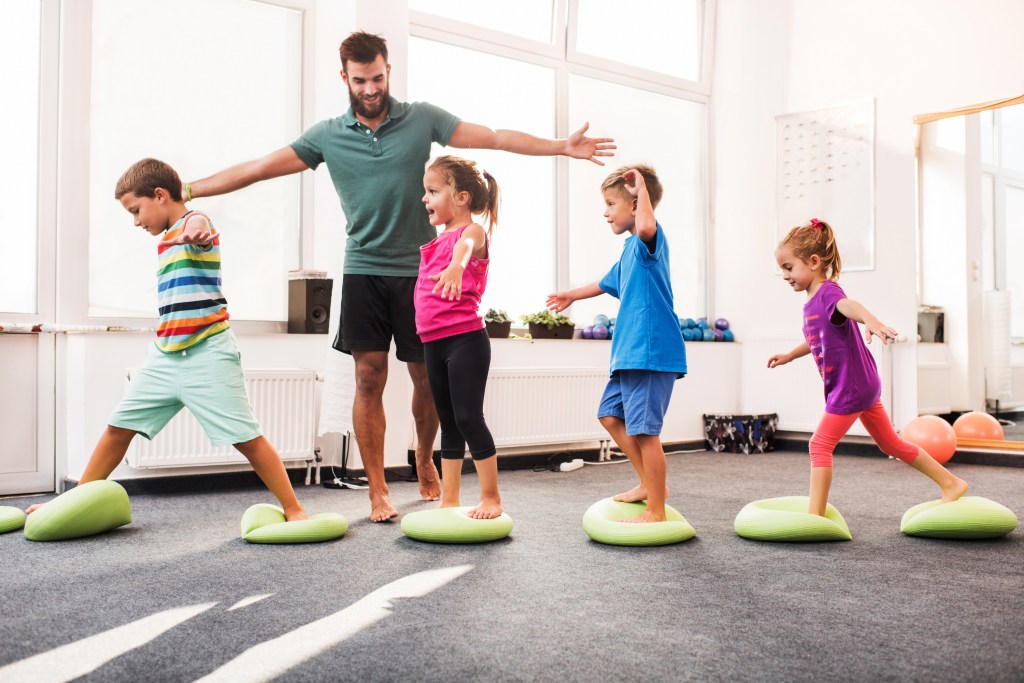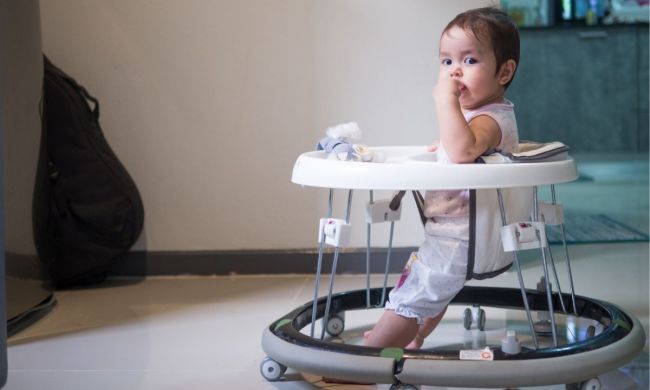Once your little one has gone from crawler to walker and has her legs firmly beneath her, you may notice another development — toe-walking. While it may seem like your new walker is destined for stardom as a ballerina, there could be an underlying physiological or developmental cause instead of just a quirky preference. Here are just a few reasons your little one might toe-walk and what you can do about it.

Why toddlers walk on their toes
Physiological reasons for toe-walking
It’s no surprise that babies grow fast. When a growth spurt hits, your little one can shoot up without warning. This growth means that the long bones in the body grow more quickly than muscles. When the tibia, otherwise called the shin bone, grows, it tasks a little while for the calf muscle to catch up. This discrepancy can cause tightness in the muscles of the lower leg as well as in the Achilles tendon, which attaches the calf muscle to the bottom of the heel.
To relieve the strain and discomfort caused by too-short calf muscles, toddlers will occasionally walk on their heels. This method of walking shortens the tendon and muscle, making it more comfortable to walk.

Developmental reasons for toe-walking
Toe-walking for an extended period of time, usually longer than six months or so, can be indicative of developmental delays or sensory issues and has even been associated with autism spectrum disorder, cerebral palsy, and muscular dystrophy. If your child is sensitive to certain textures, walking on his toes can reduce his exposure to unpleasant textures through the bottom of his feet. Also, if your baby was born prematurely or had other health issues after birth and experienced a number of heel-stick blood draws, the possibility of tissue damage exists, and walking flat-footed might cause pain.
When to be concerned about toe-walking
Toe-walking isn’t uncommon when children are just learning to walk. Exploring how their feet work and what they are capable of is just part and parcel of a toddler’s curious nature. According to the Mayo Clinic, if your toddler continues to toe-walk after age two, you should check in with your pediatrician to determine if there is an underlying cause.
Continued toe-walking increases your child’s risk of falls and injury, so it’s best to address it if it doesn’t resolve on its own. Most children who toe-walk as toddlers begin to use a normal gait with no issues. It’s estimated that as many as 12% of toddlers toe-walk for no reason.
Treatments for toe-walking
If it’s determined that your child is toe-walking due to discomfort from the Achilles tendon, your pediatrician or physical therapist can guide you through a series of gentle stretches designed to lengthen the tendon and increase flexibility. These stretches are usually well-tolerated, but care should be taken to not over-stretch as that can damage the tendon.
If your child is toe-walking due to an underlying condition like cerebral palsy or muscular dystrophy, treatments may include ankle bracing or casting for severe cases. For children who toe-walk as a symptom of ASD or sensory problems, exposing your child to different textures might help. Consult with your child’s health care provider before beginning any treatment at home.
Activities like yoga, dance (not ballet!), and martial arts can also help improve gait and balance for children who toe-walk.



